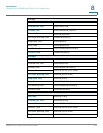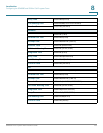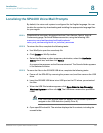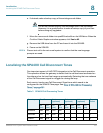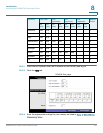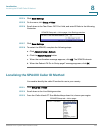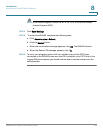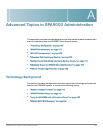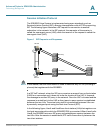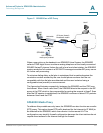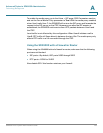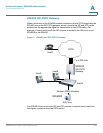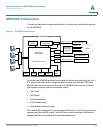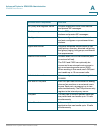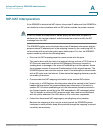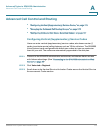
Advanced Topics in SPA9000 Administration
Technology Background
SPA9000 Voice System Administration Guide 166
A
Session Initiation Protocol
The SPA9000 Voice System is implemented using open standards, such as
Session Initiation Protocol (SIP), allowing interoperation with all ITSPs supporting
SIP. The following figure illustrates a SIP request for connection to another
subscriber in the network. In the SIP protocol, the requestor of the session is
called the user agent server (UAS), while the receiver of the request is called the
user agent client (UAC).
Figure 1 SIP Requests and Responses
NOTE In this manual, the term client station is used to describe any SIP UA (including IP
phones) that registers with the SPA9000.
In a SIP VoIP network, when the SIP proxy receives a request from a client station
(UAS) for a connection and it does not know the location of the UAC, it forwards
the message to another SIP proxy in the network. Once the UAC is located and the
response is routed back to the UAS, a direct peer-to-peer session is established
between the two UAs. The actual voice traffic is transmitted between UAs over
dynamically assigned ports using the Real-time Protocol (RTP).
In the following figure, UserA and UserB are client stations (UAs) that register over
the local area network to which the SPA9000 PBX is connected. When UserA calls
UserB, the SPA9000 acts as a SIP proxy and establishes a session between the
two UAs. After the session is established, RTP traffic flows directly between the
two client stations.
SIP UA
SIP UA
SIP Proxy
SIP Proxy
RTP
1
2
3
4
SIP Proxy



